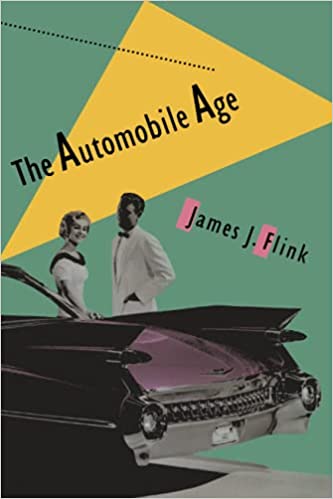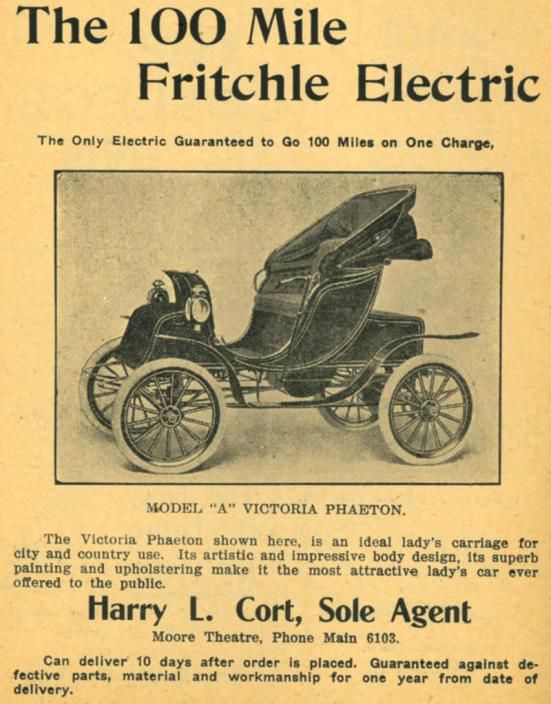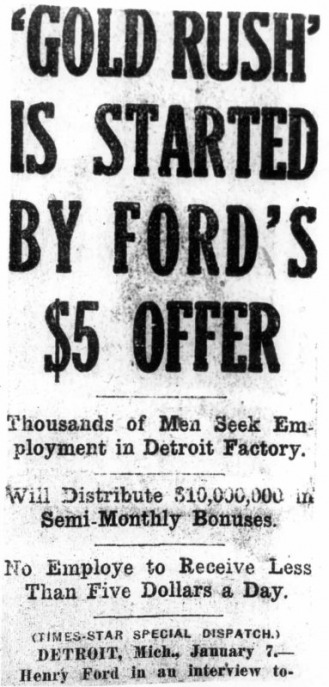
While working on my master’s degree at Eastern Michigan University in the early 2000s, I devised an independent study focused on my growing interest in the relationship between women and cars. What follows is one of the response papers that addresses the problems of male automotive historians and the woman driver. Written in 1988, The Automotive Age was considered revolutionary in the field of social automotive history; however, its understanding and treatment of the female motorist left much to be desired. Three years later, Virginia Scharff made the first attempt to rectify Flint’s misconceptions in the groundbreaking Taking the Wheel: Women and the Coming of the Motor Age.
In “Gender Wars,” Clay McShane writes that in the early twentieth century, the motorcar “served as a battlefield in the wars over gender roles” (149). It is interesting, therefore, that auto historian James Flink, in his highly regarded text The Automobile Age, makes little reference to gender except in the most stereotypical of ways. Flink appears to be unaware of the effect of the automobile on gender relations; he fails to recognize how the actions of the auto industry during this time period often reconfigured and reinforced cultural gender roles that remain to this day. Flink’s failure to acknowledge this phenomenon is especially evident in his discussion of two events in early automotive history. The first is his discussion of the manufacture and marketing of the electric car; the second concerns the establishment of the Ford Motor Company’s Five Dollar Day.
Of the electric car, Flink writes, “it was especially favored by women drivers, who were concerned foremost about comfort and cleanliness […]” (10). Such a sentiment suggests the electric car was developed in order to fulfill the needs and desires of the woman driver. However, what is more likely is that the electric car was not developed as a women’s car at all, but rather, was marketed to women in order to keep them from getting behind the wheel of the faster, more powerful gasoline powered motorcar. Rather than create cars specifically for male or female consumers, automakers called upon prevailing gender ideology to create ‘natural’ markets for both the electric and gasoline-powered cars.

The gasoline-powered automobile was gendered male from the very beginning. As McShane tells us, “The changes wrought by nineteenth-century industrialization profoundly threatened many traditional sources of male identity” (151). It became necessary, therefore, for new cites of masculinity to emerge. The automobile provided the male population with such a location. The characteristics of the automobile quickly became conflated with masculinity. Not only did the early gasoline-powered motorcar require physical strength and some mechanical ability to operate, but it also provided male drivers with opportunity to exert control over a machine during a time when industrial machines monitored their factory lives. The act of driving soon became defined by qualities – aggression, control, and steady nerves – considered masculine. And it also served as a form of liberation, as men often got behind the wheel to escape occupational and familial responsibilities. As McShane suggests, “men defined the cultural implications of the new automotive technology in a way that served the needs of their gender identity” (149).
The electric car, on the other hand, symbolized that which was not masculine. It was slow, clean, easy to handle, and could not travel great distances. It did not offer the speed, power, driving range and freedom that characterized the gasoline-powered car. As the opposite of masculine, the electric car became associated with femininity, and was therefore considered especially appropriate for the female driver. While the electric car may not have been developed specifically for women drivers, the characteristics that became attached to it, labeled feminine by the automobile culture, deemed it an inappropriate vehicle for men.

While Flink suggests women desired the electric car, it is more likely that the car was marketed to women to prevent them from driving gasoline-powered automobiles and infringing on masculine territory. As Virginia Scharff writes, “Women were presumed to be too weak, timid and fastidious to want to drive noisy, smelly gasoline-powered cars” (37). Flink’s suggestion that women eagerly accepted the electric car and the gender roles that accompanied it is erroneous; the majority of women drivers were aware of the electric car’s limitations and often desired a vehicle that would go faster and farther. However, the gender ideology associated with electric and gasoline automobiles was promoted and encouraged, and soon became ingrained in the culture. The gendering of automobiles not only reinforced cultural notions of masculinity and femininity, but had a profound influence on the development and marketing of automobiles as well. As Scharff suggests, the electric starter, which made the gasoline-powered car almost as easy to drive as the electric model, would most likely have been available sooner had the auto industry been more willing to open up automobility to the female population.

Flink’s second lack of gender consciousness is also evident in his discussion of the family wage and the Five Dollar Day. Flink describes the Five Dollar Day as Ford’s boldly conceived plan “for sharing profits with his workers in advance of their being earned” (121). The Five Dollar Day doubled the going rate of pay while shortening the workday by two hours. Ford’s policy was based on the notion that a worker should earn enough to provide for his dependant wife and children. The Five Dollar Day served to establish and reinforce his conviction that the husband should be the family breadwinner, and that women’s place was in the home. Thus the Five Dollar Day not only served as a form of social control over workers and the work process, but also firmly established appropriate gender roles in both the workplace and home. As Martha May writes in “The Historical Problem of the Family Wage,” “the underlying premises of the family wage made a dependent family essential to a preferred standard and to the notion of ‘normal manhood'” (402). The exclusion of benefits from those who did not fit Ford’s concept of the “family,” i.e. married women with working husbands, served to reinforce, economically and ideologically, proper roles for women and men. The family wage ideology instituted by Ford, and the gender roles that accompany it, has survived as an important element in our culture and our economy. In The Automobile Age, Flink describes the Five Dollar Day as an example of Ford’s role as an “exemplary employer regarding monetary remuneration” (120). What Flink fails to notice, however, is that Ford’s Five Dollar Day has had a lasting impact on how men’s and women’s work is perceived.
While The Automobile Age offers a wealth of information on the automobile and car culture, Flink fails to question or analyze the role the automobile has played in establishing and reinforcing cultural gender roles.
Flink, James J. (1988). The Automobile Age. Cambridge, Mass: MIT Press.
May, Martha. “The Historical Problem of the Family Wage: The Ford Motor Company and the Five Dollar Day.” Feminist Studies, vol. 8, no. 2, 1982, pp. 399–424.
McShane, Clay. “Gender Wars” in Down the Asphalt Path: The Automobile and the American City. New York: Columbia University Press, 1994.
Scharff, Virginia. Taking the Wheel: Women and the Coming of the Motor Age. Albuquerque: University of New Mexico Press, 1991.